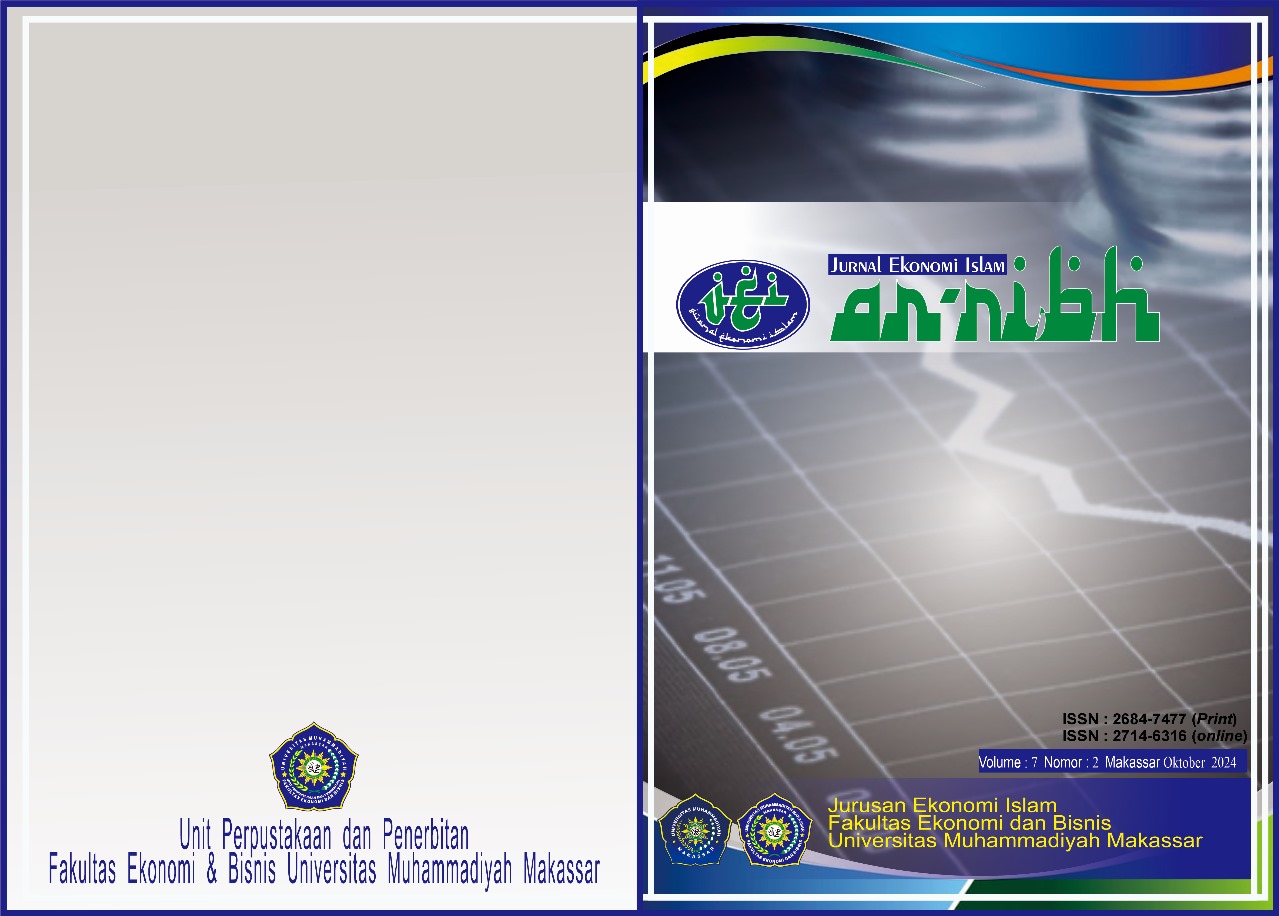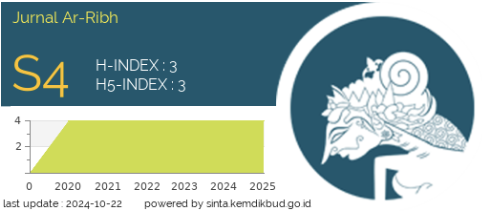The Influence of Financial Performance on the Stability of Islamic Banks in Indonesia
DOI: https://doi.org/10.26618/jncsms57
Abstract
This study investigates the influence of financial performance on the stability of Islamic banks in Indonesia during the 2018–2023 period. The research uses a quantitative approach with panel data regression analysis conducted through EViews software. The sample consists of five Islamic Commercial Banks (BUS) that regularly publish monthly financial statements. Secondary data were obtained from official bank websites and the Financial Services Authority (OJK). The independent variables in this study include the Capital Adequacy Ratio (CAR), Net Operating Margin (NOM), and Net Performing Financing (NPF), while the dependent variable representing bank stability is proxied by the Z-Score of Return on Assets (ROA). The results reveal that CAR and NOM have a positive and significant impact on the stability of Islamic banks, indicating that strong capital adequacy and profitability enhance resilience and financial soundness. In contrast, NPF shows an insignificant effect on bank stability, suggesting that non-performing financing levels during the observed period were manageable and did not critically threaten financial stability. These findings support both signaling theory and financial intermediation theory, emphasizing that improved capital management and operational efficiency can enhance stakeholder confidence and maintain sustainable stability in Islamic banking. The study contributes to Islamic financial literature by providing empirical evidence on the determinants of financial stability, offering valuable insights for regulators and bank managers in developing strategies to strengthen the resilience of Islamic banking institutions in Indonesia.
References
Astuti, W., & Tunjung Sari, U. (2021). Studi Literatur Terhadap Faktor-Faktor Yang Mempengaruhi Profitabilitas Bank Syariah. JEMeS - Jurnal Ekonomi Manajemen Dan Sosial, 4(2), 23–31. https://doi.org/10.56071/jemes.v4i2.249.
Bank Indonesia. (2022). BI 7-DAY REVERSE REPO RATE NAIK 25 BPS MENJADI 5,50%: SINERGI MENJAGA STABILITAS DAN MOMENTUM PEMULIHAN. Bank Indonesia. https://www.bi.go.id/id/publikasi/ruanmedia/newsrelease/Pages/sp_2435022.aspx#:~:text=Rapat Dewan Gubernur (RDG) Bank,bps menjadi 6%2C25%25.
Bhagat, S., Bolton, B., & Lu, J. (2015). Size, leverage, and risk-taking of financial institutions. Journal of Banking and Finance, 59, 520–537. https://doi.org/10.1016/j.jbankfin.2015.06.018 Bikker, J., & Bos, J. W. B. (2008). Bank performance: A theoretical and empirical framework for the analysis of profitability, competition and efficiency. In Bank Performance: A Theoretical and Empirical Framework for the Analysis of Profitability, Competition and Efficiency (Issue November). https://doi.org/10.4324/9780203030899
Brigham, E. F., & Houston, J. F. (2018). Dasar-Dasar Manajemen Keuangan Buku 1, Edisi
Salemba Empat.
Darajati, T. S., & Hartomo, D. D. (2017). STRUKTUR MODAL SEKTOR PERBANKAN PADA SAAT KRISIS KEUANGAN. Jurnal Bisnis & Manajemen, 15(1), 17–32. Faizin, M. (2020). Penerapan Vector Error Correction Model pada Variabel Makro Ekonomi di Indonesia. Jurnal Ekonomi, 25(2), 287–303. https://doi.org/10.24912/je.v25i2.671
Fatoni, A., & Sidiq, S. (2019). Analisis Perbandingan Stabilitas Sistem Perbankan Syariah Dan Konvensional Di Indonesia. Ekspansi: Jurnal Ekonomi, Keuangan, Perbankan DanAkuntansi, 11(2), 179–198. https://doi.org/10.35313/ekspansi.v11i2.1350 Fauziah, Ayu, F., & Hidayatin, N. N. (2020). Inklusi Keuangan dan Stabilitas Sistem Keuangan( Bank Z-Score ) di Asia Jurusan Administrasi Niaga , Politeknik Negeri Malang Indonesia. Journal Ekonomi Dan Kewirausahaan, 14(1), 30–47.
Harahap, S. S. (2015). Analisis Kritis atas Laporan Keuangan. Rajawali Pers.
Hasyim, A. I. (2016). EKONOMI MAKRO (Petama). Kencana.
Henry Ntarmah, A., Kong, Y., & Kobina Gyan, M. (2019). Banking system stability and economic sustainability: A panel data analysis of the effect of banking system stability on sustainability of some selected developing countries. Quantitative Finance and Economics, 3(4), 709–738. https://doi.org/10.3934/qfe.2019.4.709
Kasmir. (2018). Analisis Laporan Keuangan. Rajawali Pers.
Khasanah, U., Tibrizi, A., & Wicaksono, S. (2021). Intermediary performance of Islamic banks in the disruption era: Does it contribute to economic growth? Banks and Bank Systems,16(1), 103–115. https://doi.org/10.21511/bbs.16(1).2021.10
Kurniawan, A. W., & Puspitaningtyas, Z. (2016). Metode Penelitian Kuantitatif. Pandiva Buku.
Kusumastuti, W. I., & Alam, A. (2019). Analysis of Impact of Car , Bopo , Npf on Profitability of Islamic Banks. Journal of Islamic Economic Laws, 2(1), 30–59.
Mukhlis, I. (2012). Kinerja Keuangan Bank Dan Stabilitas Makroekonomi terhadap Profitabilitas Bank Syariah di Indonesia. Jurnal Keuangan Dan Perbankan , 16(2), 275–285. http://jurkubank.wordpress.com
Munawir. (2011). Analisis Laporan Keuangan : Edisi Kelima. Liberty.
Ozili, P. K. (2019). Non-performing loans and financial development: new evidence. Journal
of Risk Finance, 20(1), 59–81. https://doi.org/10.1108/JRF-07-2017-0112
Sadrinata, F. F., & Rani, L. N. (2019). Analisis Perbandingan Pengaruh Variabel Makro Ekonomi Terhadap Stabilitas Bank Syariah Dan Bank Konvensional Di Indonesia Periode Tahun 2010-2017. Jurnal Ekonomi Syariah Teori Dan Terapan, 6(10), 2095–2109. https://doi.org/10.20473/vol6iss201910pp2095-2109
Wulandari, T., & Darwis, H. (2020). Analisis Rasio Likuiditas, Solvabilitas, Dan Rentabilitas Dalam Laporan Keuangan Perusahaan. Jurnal Akuntansi, 8(1), 34–50. https://doi.org/10.37932/ja.v8i1.65
Yulistiani, I., & Suryantini, N. (2016). Pengaruh Perputaran Kas, Kecukupan Modal Dan Risiko Operasi Terhadap Profitabilitas Pada Perusahaan Perbankan Di Bei. E-Jurnal Manajemen Universitas Udayana, 5(4), 2108–213














